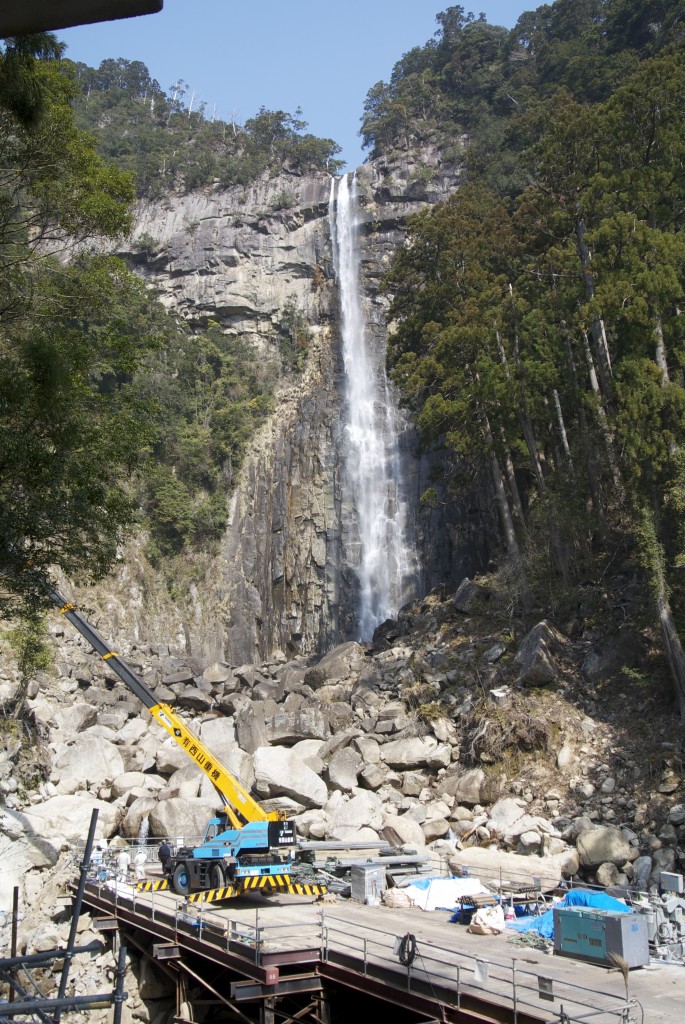
The famous waterfall - and the wrong kind of crane ruining the scene. Devastation from a typhoon last year has necessiated large-scale repairs.
Nachi waterfall is the largest in Japan. It’s also revered as a kami. It not only speaks of the blessings of nature, but it radiates negative ions. Nowhere else exudes vitality quite as strongly.
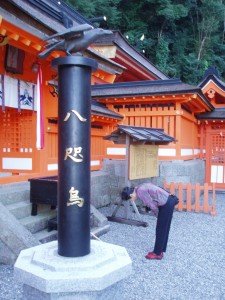
The three-legged crow makes its usual Kumano appearance
In times past the waterfall was worshipped directly, and still today there is a platform near the base of the waterfall where prayers are offered. Now, unfortunately, there are cranes, trucks and large-scale repairs going on after a devastating typhoon last year. All along the Kumano River too are scenes of debris from landslides and fallen boulders.
Nachi Taisha stands on a nearby hillside, though curiously you can only see the waterfall from its neighbour – Seiganto-ji. Actually, it’s not so curious – for hundreds of years these two World Heritage properties were one and the same complex. Still today they have a symbiotic feel, with a mere gateway between them. The route leads from one to the other, and visitors pass automatically from the world of kami into that of the buddha.
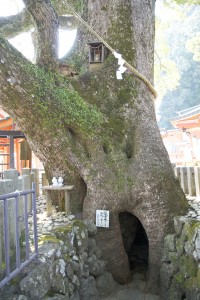
Nachi's sacred tree - an opening into another world
Like the other Kumano shrines, Nachi displays its three-legged crow connection, and I was taken into the honden precincts by a priest to see a rock claimed to be its petrified body. According to legend, it flew here after its mission and turned into a rock. It seemed to me that perhaps there was some connection with the shadowy figure who lies behind the symbol – a shamanic seat or altar, for instance. I put my speculation to the priest, but he laughed it off as a foreigner’s amusing fantasy.
The shrine boasts the biggest box for picking fortunes (omikuji) I’ve seen in Japan. It boasts too a sacred tree that is the most striking I’ve ever come across. It was supposedly planted by Taira no Shigemori (1138-1179), son of Kiyomori, and though it’s still flourishing you can walk down some steps, enter into the hollow and come out the other side. Awesome! It’s as if for a few brief moments you plug into the tree spirit.
Although it’s the main feature in the precincts, most people oddly seem to walk straight past it. Yet when I think of Nachi from now on, it will not only be for the waterfall. It will be for the petrified three-legged crow, and for that very special sacred tree.
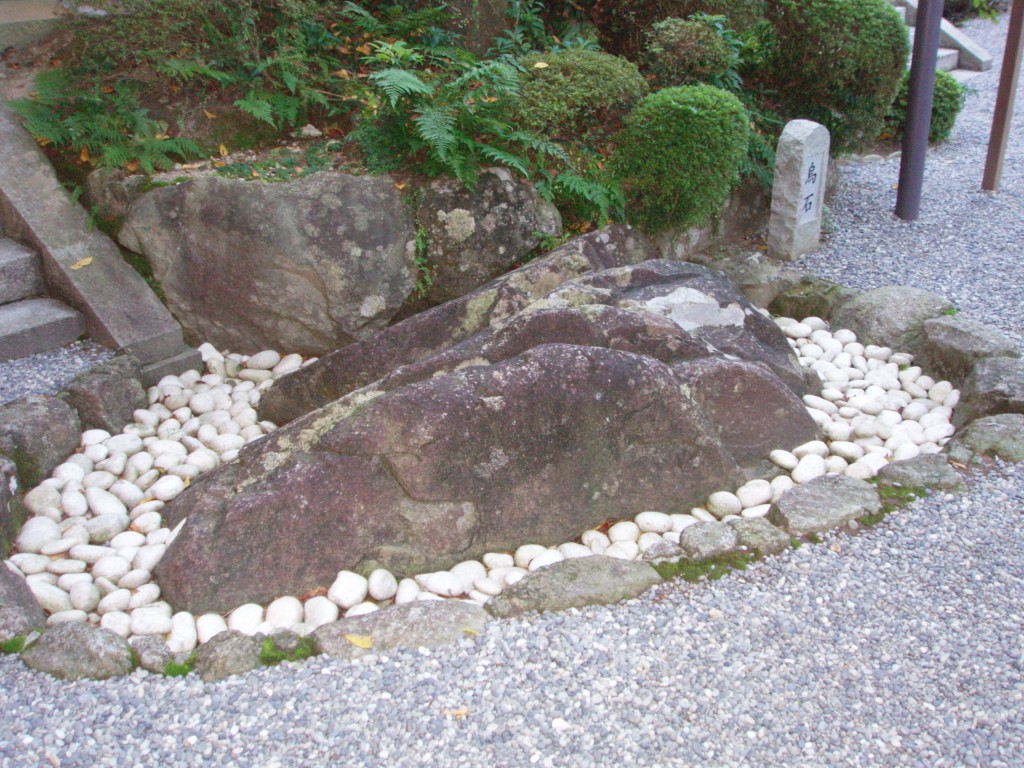
The petrified yatagarasu crow
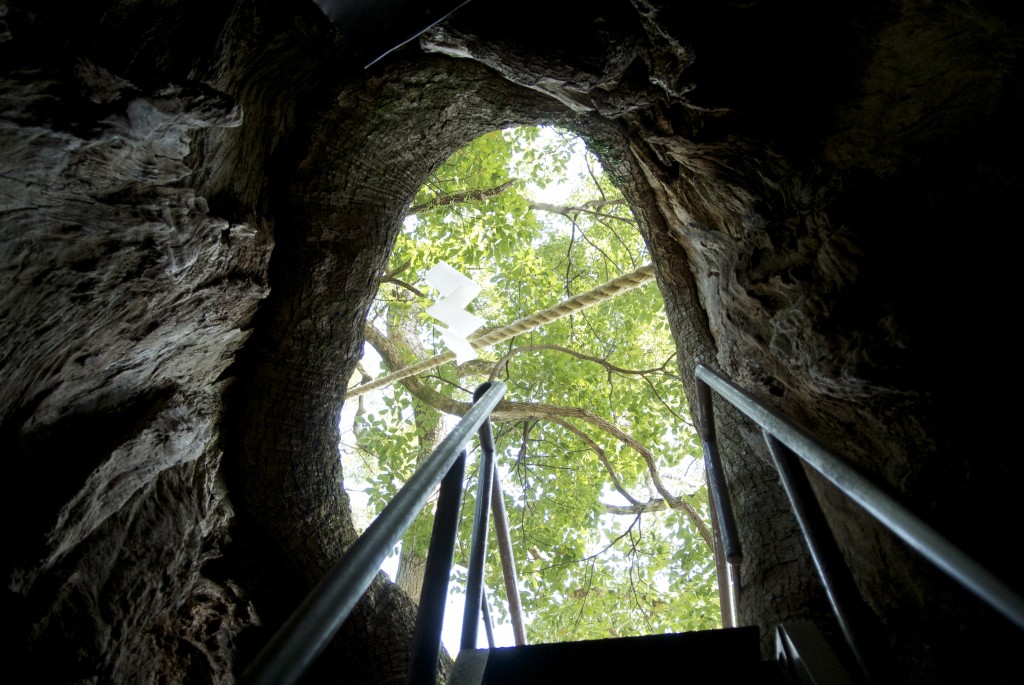
Magical view from inside a sacred tree
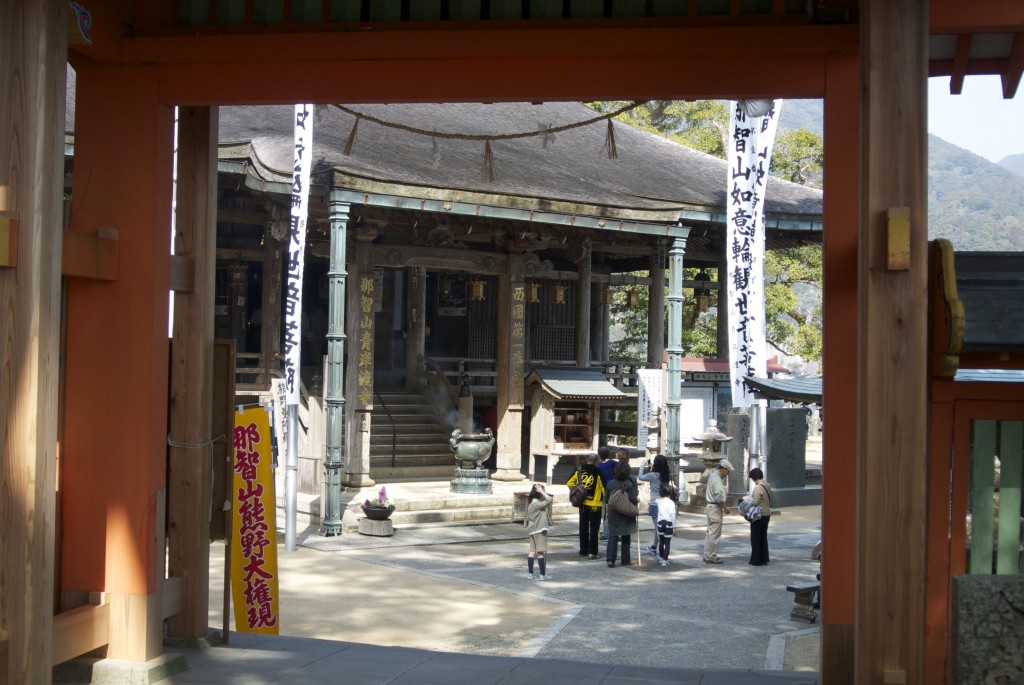
Gateway from shrine to temple: Seiganto-ji was only separated from the shrine after 1868
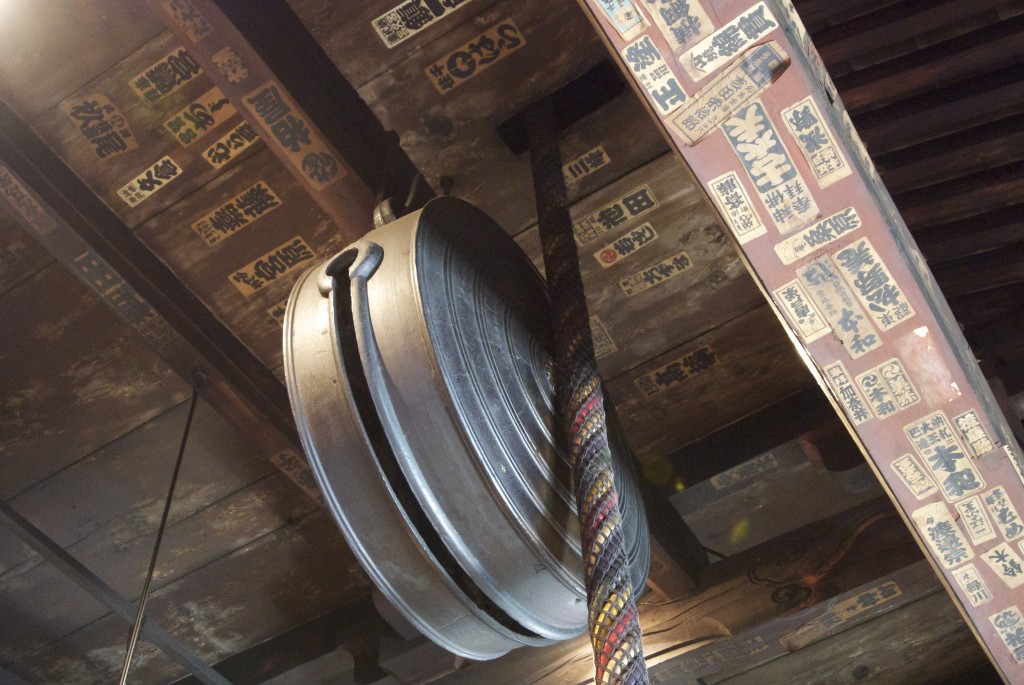
Like Nachi, Seiganto-ji belongs to the Kii Mountains World Heritage site. It boasts the biggest bell of its kind in Japan.
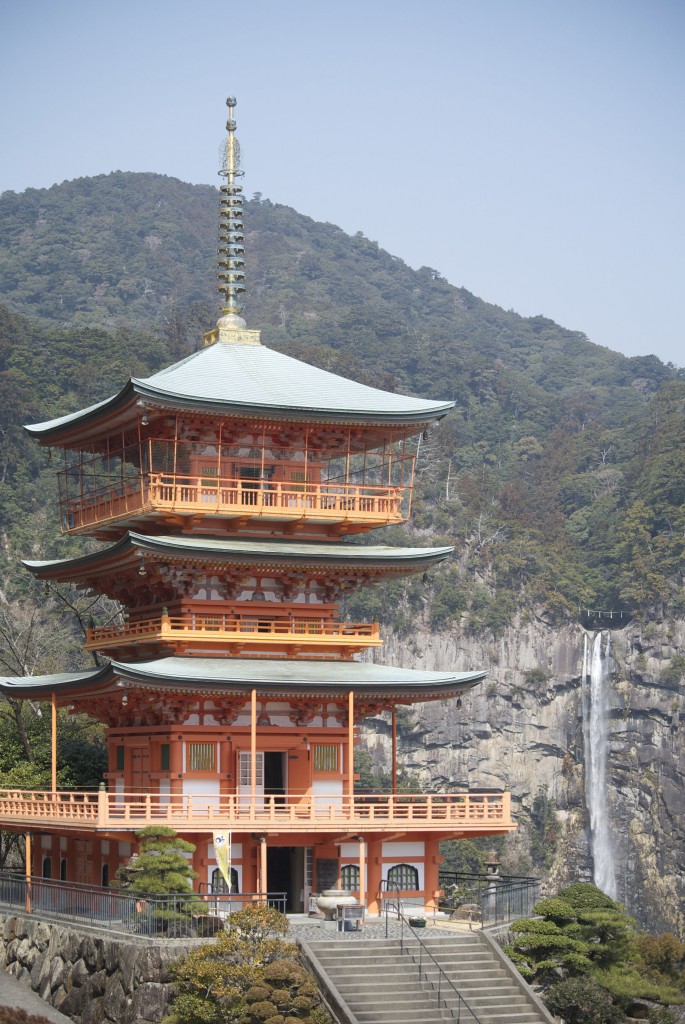
Seiganto-ji boasts too a pagoda with the best view in Japan

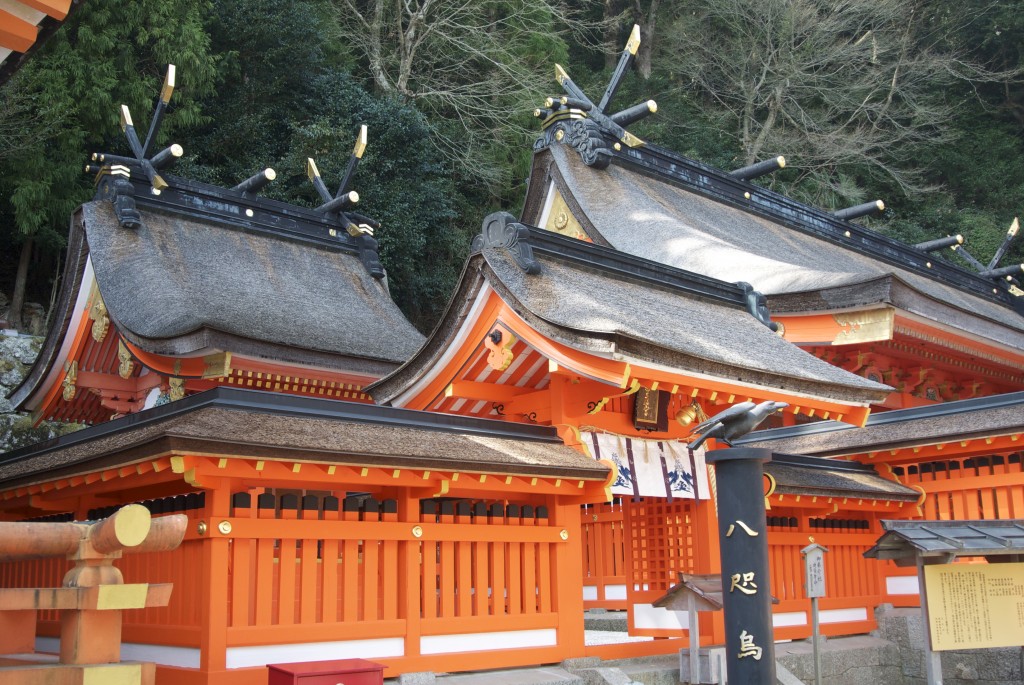
Leave a Reply